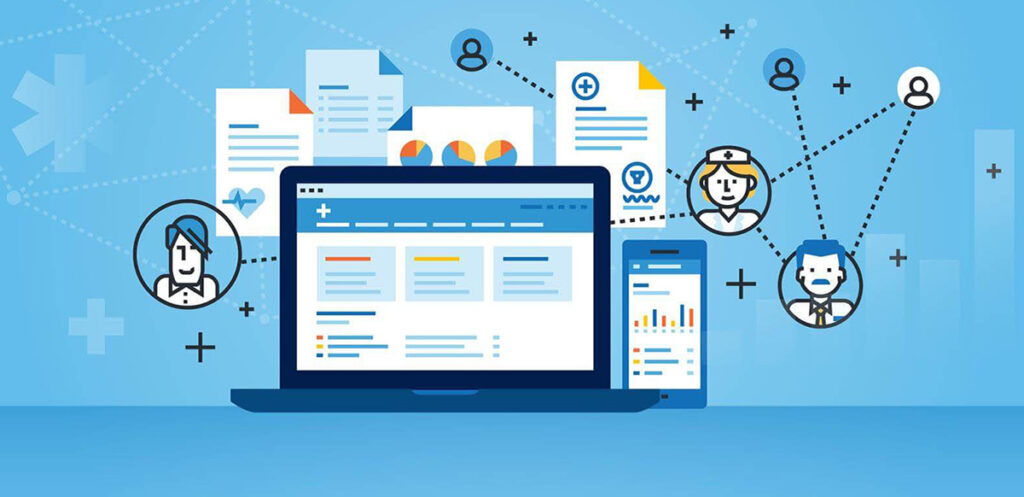Table of Contents
People make decisions every day, but it also happens that some of them are not easy. All actions and deeds of a person in any area of life are the results of decision-making processes.
It is often necessary to make an important decision quickly, and having a system that can help make the right decisions is of great value. Systems capable of not only providing information but also participating in the decision-making process are known as Decision Support Systems (DSS). DSS is a computerized information processing system that is primarily designed to support organizational activities. In other words, DDS are information systems that support corporate or entrepreneurial businesses that are in some way related to decision making. DSSs are especially important when the situation changes rapidly, and anticipation and determination of the future of the case are hardly possible.
Medical errors are one of the main problems in the healthcare field; therefore, patient safety plays a significant role in this area. As a result of advances in information technology, the method was used to improve medical services and patients’ health. One of the most important and applicable information systems is clinical decision support systems (CDSS).
The medical industry today contains a considerable amount of information. It will require professional advice and support, especially if you consider all the possible discoveries and developments that this area replenishes daily. The information with which the system works includes diagnostics, medications, treatment, and follow-up at all three stages primary, secondary, and final prevention. Clinical Decision Support System (CDSS) is interactive software that is developed based on expert systems to help and support decision-making by doctors, medical personnel, and other personnel who are associated with the health care system.
CDSS can be divided into various categories and types, but most often, they are classified as knowledge-based or non-knowledge-based.
- Knowledge systems create rules (IF-THEN statements) in which the system extracts data to evaluate the rule and produces an action or inference. Rules can be created using literary, practical, or patient-centered evidence.
- CDSSs that is non-knowledge based that required the data source but use artificial intelligence (AI), machine learning (ML), or statistical pattern recognition instead of programming their medical expertise. But these systems can have issues with data availability and problems with understanding the logic that AI uses to provide recommendations.
Now that we have figured out the concept of CDSS and its classification, we propose to go to its functions.
CDSS’s scope of functions
Clinical decision support systems have extensive functionality and a key to themselves diagnostics, notification system, treatment of diseases, prescription of drugs, control of dispensing of drugs, and much more. They can manifest themselves in computer reminders, computer reports, data reports, and clinical workflow tools. We are going to review the main functions of the system and focus on its benefits.
- Patient safety. It is reducing the number of medication errors associated with drug-drug interactions (DDI). According to statistics, up to 65% of patients are exposed to potentially dangerous drug combinations. CPOE systems are currently developed using software that measures dosing safety, prevents the use of similar formulations, and DDI checks.
- Clinical management. Research shows that using the system can improve staff adherence to hospital policies and guidelines. Traditional clinical guidelines and care delivery are challenging to implement in practice if clinicians do not follow them. CDSS can also help with patient management of research/treatment protocols, tracking and placing drug orders, and providing preventive care.
- Cost reducing. CDSS can help hospitals be more efficient by reducing hospital stays, integrating CPOE systems, offering cheaper drug alternatives, or reducing test duplication.
- Administrative functions. CDSS provides support for clinical and diagnostic activities, ordering procedures and tests, and triage of patients. The algorithms developed can offer a list of diagnostic services to help physicians choose the most appropriate one.
Despite the significant advantages, the system has some pitfalls. So let’s move on to the points where the issues that you may encounter will be listed.
Pitfalls of CDSS
Fragmented workflows
Providing the CDSS is autonomous; the physician’s workflow may be disrupted. It can also happen if the system is designed without taking into account human information processing and behavior. As a solution to this problem, CDSS was developed with the option “think out loud” to simulate the workflow.
Disrupted workflow can lead to increased cognitive effort, more time required to complete tasks, and less time face-to-face with patients.
Impact on user skills
Before introducing CPOE and CDSS into the medical field, physicians, pharmacists, and nurses have always double-checked prescriptions and dosages. Now they can neutralize the quick check by relying on CDSS to do it for them. But don’t skip this step.
Computer literacy and CDSS
Lack of skills and knowledge can make it challenging to work with CDSS. It all depends on how the CDSS is designed. Some systems have been deemed too complicated, which means training is required to work with them. Therefore, it is optimal to develop a system taking into account the hospital staff’s needs and wishes.
Hard to get access and integrate
The first digital CDSS appeared in the 1970s. At the time, they had poor systems integration, were slow to process data, and were often limited to academic pursuits. To date, the systems have improved significantly, but they do not correspond to modern technologies, since most of them are desktop app. In this case, there is a great difficulty accessing information outside the local network of one hospital and integrating the system with other digital solutions. It is now possible to use CDSS as a web application or integrate with Electronic Health Records (EHR) and Computerized Supplier Order Entry Systems (CPOE). They can be administered through a desktop computer, tablet, smartphone, and other devices such as biometric monitoring and wearable healthcare technologies. These devices may or may not create outputs directly on the device or linked to EHR databases.
FAQ
- Increased quality of care and enhanced health outcomes
- Avoidance of errors and adverse events
- Improved efficiency, cost-benefit, and provider and patient satisfaction
Health information technologies designed to improve clinical decision making are particularly attractive for their ability to address the growing information overload clinicians face and to provide a platform for integrating evidence-based knowledge into care delivery. The majority of CDS applications operate as components of comprehensive EHR systems, although stand-alone CDS systems are also used.
Decision-making speed is critical in the rapidly developing world of healthcare, and every clinic needs support to solve such a complicated task. Implementing this solution requires IT professionals to work with stakeholders to better understand key challenges and make information resources more accessible. It should also be easily integrated with all processes and patient-centered.




